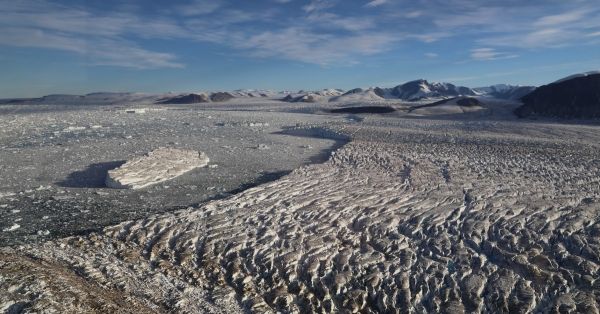Two researchers from the University of Ottawa are the first to map out all the glaciers that end in the ocean in the Northern Hemisphere and provide a measure of their rate of change over the last 20 years. Their findings will help better understand – and perhaps predict – the impact of climate change north of the equator.
In their article “Retreat of Northern Hemisphere marine-terminating glaciers, 2000-2020” published in Geophysical Research Letters, they analyzed all 1704 glaciers that touched the ocean in the year 2000 and documented their frontal position in 2000, 2010, and in 2020.
Chilling findings
“Since 2000, glaciers in the Northern Hemisphere that end in the ocean lost a total area of 390 km2 per year. That’s 6.6 times the area of Manhattan, or an average of more than 1 km2 per day,” said lead author Will Kochtitzky, PhD candidate in the Department of Geography, Environment and Geomatics at the University of Ottawa.
According to the study, glaciers flowing from the Greenland Ice Sheet accounted for over 60% of total area losses.
Read more at: University of Ottawa
Trinity Glacier is one of the glaciers that has experienced the most retreat in the Canadian Arctic over the past 20 years, with losses of its terminus at a rate of approximately 1 km2 per year. This photograph shows a freshly calved large iceberg drifting away from the front of Trinity Glacier in August 2016. (Photo credit: Luke Copland)


